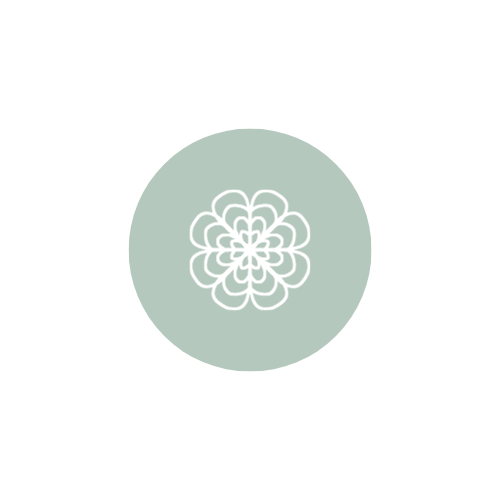The Importance of Recovery and Rest Days for Optimal Fitness
The importance of recovery and rest days in your fitness journey cannot be overemphasized. Striking the right balance between physical activity and adequate rest is a vital aspect of maintaining a healthy and active lifestyle. This blog post will shed light on the science behind exercise and recovery, and why rest days are crucial for achieving your fitness goals.

The Science of Exercise and Recovery
Engaging in physical activity triggers a fascinating sequence of events in the body, particularly in the muscles. Exercise, whether it’s strength training, cardio, or a combination of both, inflicts minor damage to the muscle fibers known as microtears. This might initially seem concerning, but these microtears are essential for muscle development and growth.
The body’s response to these microtears is to repair and reinforce them, making the muscles stronger and more resilient over time. This repair process, which occurs during rest and recovery periods, leads to muscle growth and increased strength. This cycle of exercise-induced microtears and subsequent repair is the underlying mechanism of muscle development and strength gains.

However, the repair process is not instantaneous. It requires a sufficient period of rest to be effective. Without adequate recovery days incorporated into your fitness routine, the muscle tissue doesn’t have ample opportunity to heal properly. This can lead to symptoms such as persistent muscle fatigue, increased susceptibility to injuries, and a decreased capacity to perform at your best. Thus, giving your body time to repair the microtears through regular rest days is paramount to optimizing your fitness results and minimizing the risk of setbacks.
Importance of Rest Days
Rest days play a fundamental role in a well-rounded fitness regimen. It’s on these days that your body goes to work repairing the minor muscle damage caused by intense workouts. It’s important to note, however, that rest doesn’t just focus on muscle recovery. It’s also a crucial time for the body to replenish its depleted energy stores.

When we push ourselves during a workout, we drain the glycogen stores within our muscles. This glycogen, a form of glucose, fuels our workouts, helping us power through those last few repetitions or final minutes of a cardio session. Without sufficient rest periods, these energy stores remain depleted, which can lead to a decrease in overall performance.
Missing out on rest days can cause more harm than just underperformance. You might start to notice symptoms of overtraining, such as persistent fatigue, mood swings, or even a decrease in your immune response. These are clear signs that your body is calling out for a break.
Rest days are also an essential part of preventing the dreaded fitness plateau. Continual strain on the body without adequate rest can eventually cause your progress to stall. Your body adapts to the stresses of exercise, but without rest, it can’t keep up with the increasing demands. This can lead to a frustrating lack of progress in your fitness journey, and even regression in some cases.
Rest days aren’t just beneficial for your physical health, but your mental health as well. Taking a day off from intense workouts can help clear your mind, reduce stress, and maintain your motivation for the long haul.
Understanding and embracing the role of rest days in your fitness regimen is key to sustainable and effective fitness progression. By strategically incorporating these days into your routine, you’ll be setting the stage for ongoing growth, continued performance improvements, and a healthier, balanced approach to fitness. Remember, progress isn’t just about pushing harder; it’s also about resting smarter.
Benefits of Proper Recovery
Adopting a suitable recovery strategy has far-reaching benefits that extend beyond merely reducing the likelihood of injuries. Appropriate rest after intense workouts facilitates muscle hypertrophy – the growth and increase of muscle cells – ultimately helping you meet your fitness objectives more efficiently. Additionally, it improves your overall workout performance by enabling you to train at your peak potential in each session.

One of the critical yet often overlooked advantages of recovery is the replenishment of muscle glycogen stores. These stores serve as your primary source of energy during high-intensity workouts. If these stores are not adequately replenished due to insufficient rest, your performance can take a substantial hit, limiting your ability to achieve your fitness goals effectively.
Besides the physical benefits, recovery also contributes positively to your mental wellbeing. It helps maintain a psychological equilibrium by reducing the stress that intense workouts can place on your mind, ultimately enhancing the quality of your training sessions.
Additionally, giving your body enough time to recuperate supports the repair of cells and tissues that may have experienced damage during exercise. This aspect is crucial because it’s during this downtime that muscle rebuilding occurs, resulting in strength and endurance improvements.
In a nutshell, a well-planned recovery strategy not only encourages physical restoration and growth but also nourishes your mental health, leading to a well-rounded, comprehensive fitness regime. Balancing high-intensity training with adequate recovery periods is the key to unlocking your full fitness potential and creating a sustainable, long-term routine.
Types of Recovery: Passive Recovery and Active Recovery
Understanding the different forms of recovery is an integral part of achieving optimal fitness. The two main types of recovery are passive and active, each offering distinct benefits and playing a unique role in your fitness journey.
Passive recovery is when you take a complete break from all forms of exercise. It’s during these periods of absolute rest that your body concentrates all its energy and resources on rebuilding muscle tissue, replenishing glycogen stores, and restoring overall energy levels. Passive recovery can mean taking an entire day off, or even an extended period if necessary, depending on your body’s needs and the intensity of your workout routine.

Contrary to what the name might suggest, active recovery doesn’t mean hitting the gym for another high-intensity workout. Instead, it involves light, low-impact activities such as gentle yoga, slow cycling, or even a leisurely walk. The goal of active recovery isn’t to strain your muscles further, but rather to increase blood circulation. This enhanced blood flow helps deliver essential nutrients to your muscles faster, which in turn aids in quicker waste product removal from your muscles.
Both active and passive recovery are crucial in their own ways and should be incorporated into your training schedule. Passive recovery gives your body the downtime it needs to conduct essential repair and regeneration processes. In contrast, active recovery keeps you moving, preventing stiffness, and enhancing nutrient delivery to your muscles.
Remember, recovery isn’t a one-size-fits-all strategy. The balance between active and passive recovery depends on factors like your fitness level, the intensity of your workouts, and your body’s unique needs. Listening to your body and understanding its signals can help you determine the right mix of both recovery types for your routine.
Recovery Tools
Achieving optimal recovery isn’t just about getting sufficient rest. Incorporating the right tools into your recovery regimen can significantly enhance your body’s ability to recuperate and prepare for the next workout. Foam rollers are a popular choice, offering self-myofascial release to ease muscle tension and improve flexibility. By gently rolling over tight areas, you encourage blood flow and nutrient delivery, promoting faster recovery and improved range of motion.

Another handy tool is the massage gun. This device can mimic the deep-tissue manipulation often performed by physical therapists. The intense percussive vibrations penetrate deep into the muscle tissue, relieving stiffness and improving circulation. Used correctly, a massage gun can help you bounce back faster after intense training sessions.
Compression clothing is another tool that can aid recovery. These garments are designed to promote blood flow and reduce swelling, making them especially useful after high-intensity workouts or endurance activities. Compression socks, leggings, and sleeves work by applying consistent pressure to the muscles, which can enhance circulation and aid in flushing out waste products like lactic acid.
Supplements can also play a key role in your recovery strategy. Protein powders and branched-chain amino acids (BCAAs) are particularly beneficial. Protein is essential for muscle repair and growth, and consuming it in powder form can provide your body with this critical nutrient promptly after a workout. BCAAs, on the other hand, can help reduce muscle soreness and fatigue, accelerating recovery and preparing your body for the next workout.
Selecting the right tools for your recovery toolbox should be a personal decision based on your unique fitness routine, your body’s needs, and personal preferences. Try different techniques and tools, pay attention to how your body responds, and fine-tune your recovery regimen for the best results. Remember, recovery is a journey and not a destination, so it’s okay to experiment and adjust your approach as needed.
Overtraining and Myths About Recovery
Understanding and debunking myths surrounding fitness recovery is crucial for maintaining a healthy training program. A common misconception is that rest days lead to a decrease in fitness or strength. This is far from the truth. The body needs time to heal from the micro tears caused by intense workouts. During this recovery period, the body rebuilds and fortifies muscle tissue, leading to increases in strength and fitness. Neglecting rest and engaging in overtraining can have the opposite effect, hindering progress rather than promoting it.

Overtraining is a state of excessive exercise without providing the body ample time to recover. This can lead to a host of negative symptoms including persistent muscle soreness, an elevated risk of injury, and a weakened immune system. Importantly, overtraining can also reduce performance levels, as your body is unable to fully recover energy stores and repair muscle tissue between workouts.
Contrary to the myth, the physical gains from your workout do not happen in the gym during the session itself, but rather in the recovery period afterward. Overtraining, by cutting short this critical recovery period, can actually stall progress, leading to a fitness plateau or even a regression in fitness levels.
Remember, balance is key in any fitness journey. A well-structured training program incorporates both challenging exercise sessions and adequate rest days to ensure optimal muscle growth and performance. By understanding and avoiding overtraining, you can help ensure your workouts are productive, sustainable, and beneficial to both your physical and mental health.






